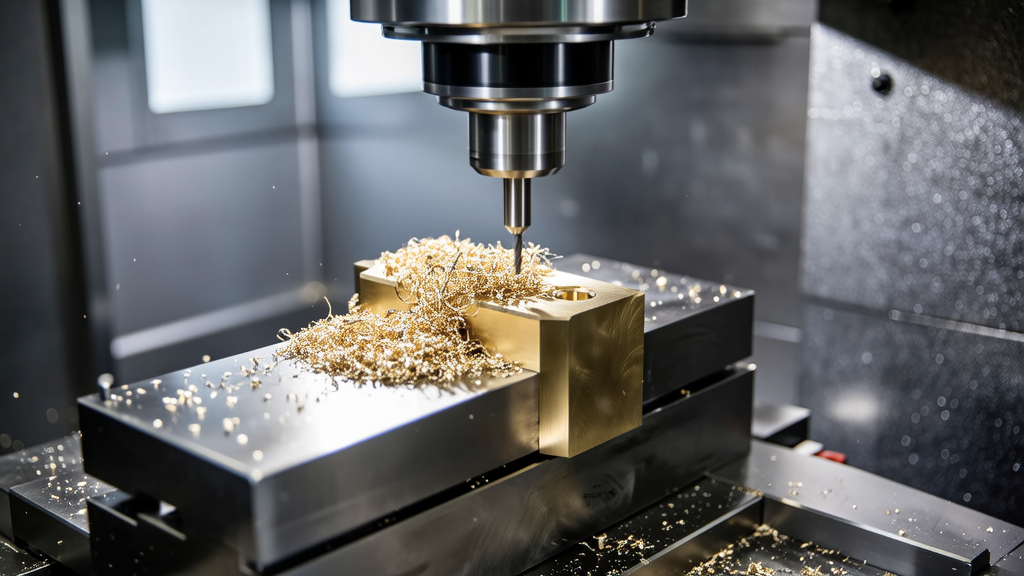Have you ever faced a situation where a project requires a complex part but the thought of creating it in several pieces seems daunting? Many manufacturers grapple with this issue, especially when aiming for high precision and efficiency. Luckily, CNC machining in Shenzhen has evolved significantly, enabling the creation of intricate components in one piece. Let’s dive into how this is possible and what it means for your projects.
Understanding Complex Part Formation
CNC machining stands for Computer Numerical Control machining, which means using computer systems to control machine tools. This technology allows for the creation of complex shapes and designs, often impossible to achieve through conventional methods. So, can this technology be harnessed to produce complex parts in one go?
Absolutely! Companies like ly-machining in Shenzhen have fine-tuned their CNC machining processes to facilitate one-piece formations. This eliminates the need for welding or assembling multiple components, which can often lead to alignment issues or structural weaknesses. A friend of mine, who operates a small aerospace firm, opted for one-piece CNC fabricated components. He noticed not only a decrease in overall lead time but also an increase in component reliability, which is critical in his industry.
The Technical Breakdown: How It Works
Benefits of Creating Complex Parts in One Piece
Real-World Applications
CNC machining in Shenzhen has been successfully utilized across various industries—everything from prototyping to the production of final components. For instance, the precision required in medical devices is a great example of where one-piece complex parts can shine. During a recent project, we produced a specialized housing unit for a medical device all in one piece, allowing for better sanitation and easier assembly in the final stages of production.
On the downside, creating extremely complex shapes in one piece may sometimes lead to longer machining times. Customizing and optimizing the design could be necessary to allow for effective heat dissipation during the machining process.

Using advanced techniques and technologies, manufacturers can change the landscape of how parts are made. If you ask me, embracing the capabilities of CNC machining in Shenzhen could be a game-changer for your projects, giving you the edge in precision, efficiency, and innovation. If you’re exploring your options or have a specific project in mind, I suggest reaching out to a local CNC shop for ideas on what can be achieved.
If you’ve had experiences or have tried creating complex parts in one piece, feel free to share your thoughts!
What types of complex parts can be created using CNC machining in Shenzhen?
CNC machining in Shenzhen allows for a wide range of complex parts to be manufactured, including aerospace components, automotive parts, medical devices, and more. Each of these applications often requires intricate designs that need to be both precise and durable.
For instance, parts like turbine blades or specialized housings for medical equipment can be fabricated in one piece. This method not only simplifies the manufacturing process but enhances the overall quality and reliability of the components.

How does the CNC machining process ensure precision in creating complex parts?
The process begins with advanced computer software that translates intricate designs into machine code. This programming controls the CNC machines with incredible accuracy. As a result, even the most detailed features can be replicated consistently.
Additionally, manufacturers conduct regular calibration and maintenance of the machines to ensure optimal performance. This attention to detail means that tolerances as tight as ±0.01mm can be achieved, making it possible to create highly precise complex parts.
What materials are typically used for one-piece complex part production?
Common materials for producing complex parts include aluminum, titanium, stainless steel, and various plastics. Each of these materials has its unique properties that cater to different applications.
For example, aluminum’s lightweight nature makes it a preferred choice for aerospace components, while titanium’s strength is ideal for high-performance medical devices. Using the right material is key to ensuring the part meets the desired functionality and durability.
What are the main advantages of creating complex parts in one piece?
One significant advantage is the reduction in assembly time. When parts are made in one piece, manufacturers can skip the intricate and sometimes error-prone assembly process. This translates to faster production times and fewer chances for defects.
Additionally, producing components in one piece enhances their structural integrity, making them more reliable in their intended applications, such as in extreme conditions found in aerospace or automotive environments.
Can you share examples of successful one-piece complex part projects?
Sure! A notable example is the creation of a complex casing for a medical device, which was successfully manufactured as a single component in Shenzhen. This project not only met the customer’s stringent quality standards but also cut production time by 40% compared to traditional methods.
Another instance is the fabrication of custom drone parts for an aerospace client. They benefited from one-piece production, which significantly improved performance and reduced weight, resulting in a more efficient end product.








